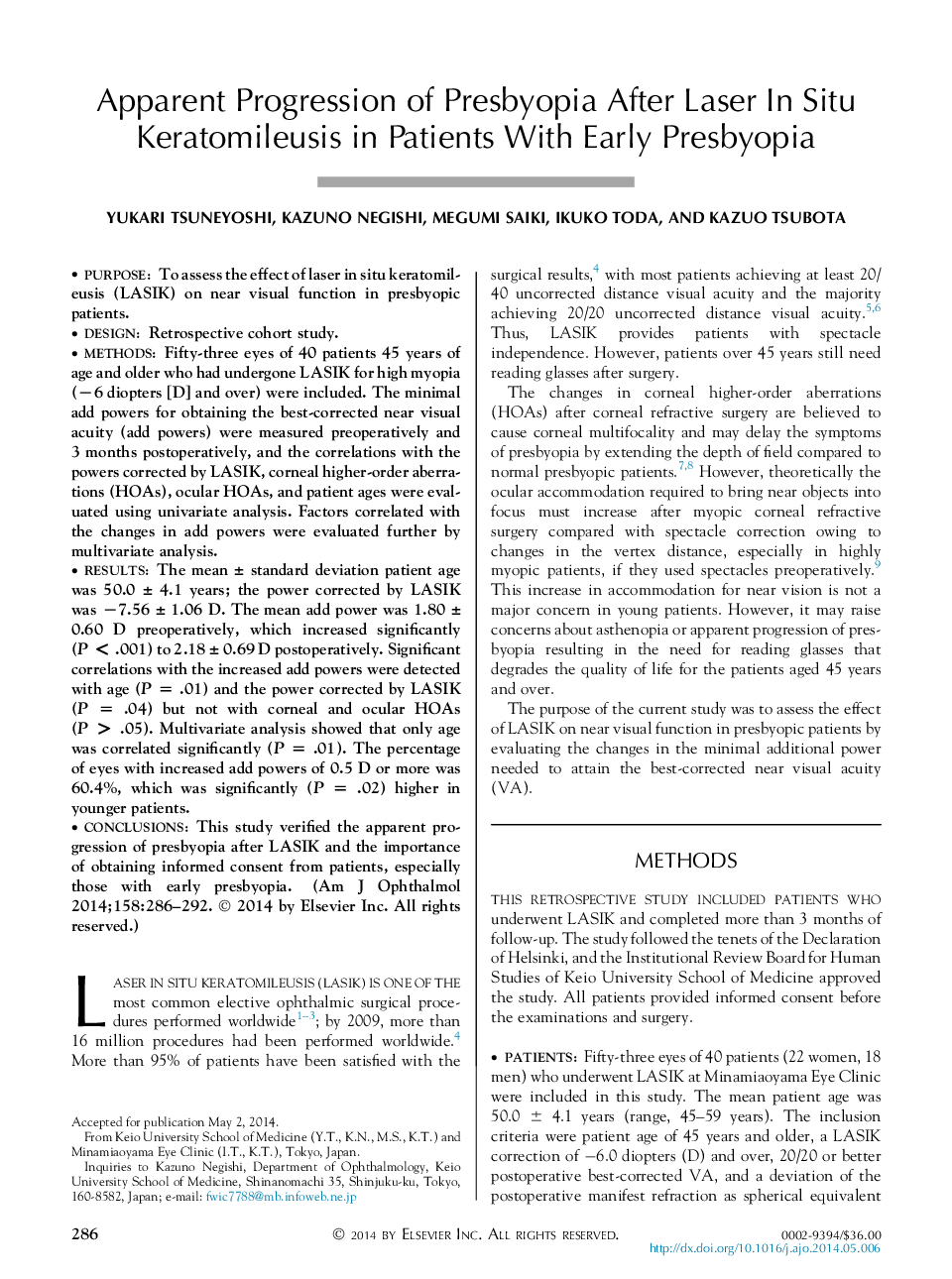| Article ID | Journal | Published Year | Pages | File Type |
|---|---|---|---|---|
| 4002085 | American Journal of Ophthalmology | 2014 | 7 Pages |
PurposeTo assess the effect of laser in situ keratomileusis (LASIK) on near visual function in presbyopic patients.DesignRetrospective cohort study.MethodsFifty-three eyes of 40 patients 45 years of age and older who had undergone LASIK for high myopia (−6 diopters [D] and over) were included. The minimal add powers for obtaining the best-corrected near visual acuity (add powers) were measured preoperatively and 3 months postoperatively, and the correlations with the powers corrected by LASIK, corneal higher-order aberrations (HOAs), ocular HOAs, and patient ages were evaluated using univariate analysis. Factors correlated with the changes in add powers were evaluated further by multivariate analysis.ResultsThe mean ± standard deviation patient age was 50.0 ± 4.1 years; the power corrected by LASIK was −7.56 ± 1.06 D. The mean add power was 1.80 ± 0.60 D preoperatively, which increased significantly (P < .001) to 2.18 ± 0.69 D postoperatively. Significant correlations with the increased add powers were detected with age (P = .01) and the power corrected by LASIK (P = .04) but not with corneal and ocular HOAs (P > .05). Multivariate analysis showed that only age was correlated significantly (P = .01). The percentage of eyes with increased add powers of 0.5 D or more was 60.4%, which was significantly (P = .02) higher in younger patients.ConclusionsThis study verified the apparent progression of presbyopia after LASIK and the importance of obtaining informed consent from patients, especially those with early presbyopia.
